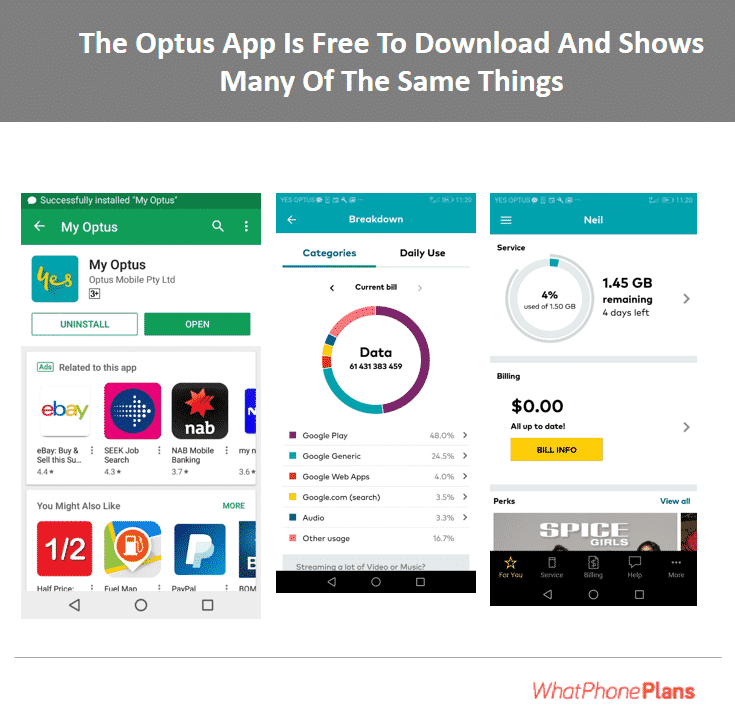Optus facilitates monitoring data consumption in multiple ways
There are many reasons why you need to keep track of your data consumption as a regular internet user. Besides avoiding extra data charges, you’ll have much greater control over your data usage if you keep regular tabs on your data consumption.
For Optus customers, monitoring and managing data usage is quite simple, and certainly very important. Like other telcos in the country, Optus charges for additional data. And when you track your data usage, you’ll be able to make better picks between the myriad of data plans that Optus offers.
In this post, we’ll explain 5 easy ways to track your data usage on Optus Prepaid Mobile Broadband.
Method 1: Monitor data usage through Optus’ official website
You can check your Optus Prepaid Mobile Broadband data usage on Optus’ official website using any internet-enabled device.
- First, have an active account on the Optus website. To create an account, click on the signup link on the site and provide personal details like your date of birth, email address, Optus account numbers, and information about the Optus service you’ve used within the last 48 hours.
- Once your account is active, simply log into the site with your account credentials.
The log in page on Optus’ official website
- You can view your data usage right on your member area’s home page. You’ll get a well-detailed record of your data consumption, including a usage graph, active data plans, and your remaining data allowance.
Method 2: Monitor data usage on the My Optus App
Another handy method for checking your Optus Mobile Data plan is through the carrier’s app. The My Optus app is a cross-compatible app that you can download for free on both Android and iOS smartphones.
- Downloaded and install the My Optus app
- Log into the app any time you want to check your data usage. The home screen of the app displays details of your data consumption.
The home page of the My Optus app displays details data usage
You’ll also find it easy to navigate to the results of a comprehensive analysis of your data consumption. The analysis identifies the apps and functions that consume most of your data.
However, the data usage report you’ll find on the network’s official website is more readable and interpretable than that of the app.
Method 3: Monitor data usage on the Optus SMS Menu
If you don’t have your computer at hand, or you don’t want to spend your data, but would like to check up on your mobile broadband data consumption, then you can make do with just about any phone that’s SMS-capable. This method is free and useful 24/7. Besides that, you can also use it on your computer through your Optus Mobile Broadband connection manager.
- Simply text “MENU” to 9999 from your Optus mobile number
- Follow through with the resulting prompts to choose the option for checking your data usage. In a short while, you’ll then receive details of your data usage in a text.
Method 4: Monitor data usage using the Optus Call Center number
You can also track your prepaid broadband data consumption over the phone.
- You can have an Optus call center agent fill you in on the details of your data usage by dialing the number 133 937.
Method 5: Monitor data usage with automatic alerts
This final method is a passive one. All you have to do is continue using your data plans without bothering to check your balance until you get an automated alert when you exceed a certain threshold. You can simply set this up on your ‘My Account’ dashboard on the network’s official website.
For instance, you can set up the system to notify you when you’ve exceeded 50%, 70%, or 90% of your data allowance.
Note, however, that sometimes the system might lag in reading your real-time data consumption and might send you belated alerts.
In Summary
The insights you gain from your data consumption analysis will help you choose data plans that are better suited for you. You’ll be able to avoid instances where you exceed or underuse your data allowance.

